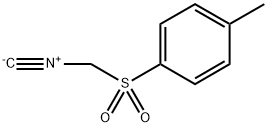BOIS DE ROSE OIL
Synonym(s):Rosewood oil
- CAS NO.:8015-77-8
- Molecular Weight: 0
- MDL number: MFCD00239823
- EINECS: 000-000-0
- Update Date: 2025-12-17 09:49:56
What is BOIS DE ROSE OIL?
Chemical properties
Rosewood oil, Brazilian (Bois de rose oil) is obtained by steam distillation of
wood from Aniba rosaeodora A. Ducke var. amazonica A. Ducke and/or Aniba
parviflora Meissner Mez. (Lauraceae). It is an almost colorless to pale yellow liquid
with a characteristic, sweet odor, reminiscent of linalool, its main constituent.
d2020 0.870–0.887; n20D 1.4620–1.4690; α20D ?2 °50′ to +4 °; solubility: 1 vol in 9 vol
of 60% ethanol at 20 ℃; ester value (after acetylation): 247–280, corresponding
to an alcohol content of 82–96% (calculated as linalool); linalool content by GC: 70–90%.
Until the 1970s, Brazilian rosewood oil was a desirable raw material for the production
of linalool, but excessive exploitation and the development of large-scale
processes for fully synthetic linalool (for production of vitamin A) have led to a
sharp decline in production. Currently, the harvesting of rosewood oil is restricted
by the Brazilian government due to the risk of extinction.Thus, the oil is
only produced in very small quantities, if ever.
Chemical properties
Bois de Rose oil is steam distilled, occasionally water distilled, from the chipped wood of A. rosaeodora and possibly from other species of the genus Burseraceae, belonging to the Laurel family. The Brazilian and cayenne oils exhibit a sweet, slightly woody, characteristic odor, whereas the Peruvian quality has a harsher, more camphoraceous top note.
Chemical properties
Evergreen, medium-sized tree growing wild in the forests of the Amazon basin (Brazil, Peru) and in French Guinea. Brazilian and Peruvian bois-de-rose oils are distilled from the same botanical variety (A. rosaeodora var. amazonica Ducke). The oils exhibit only slightly different physical characteristics, but they have different odors particular to the growing site of the trees. Cayenne bois-de-rose oil, distilled from the variety A. rosaeodora Ducke, is considered the best quality of bios-de-rose essential oils. Cayenne bois-de-rose oil is produced in large scale as compared to the Brazilian and Peruvian counterparts. Plant part used is the wood. Bois de rose has a characteristic, sweet, somewhat woody, floral odor.
Physical properties
The oil, obtained by steam distillation of the chopped wood, is colorless to pale yellow.
The Uses of BOIS DE ROSE OIL
bois de rose oil is a fragrance with a light camphor scent. This essential oil is obtained by means of steam distillation of the chipped wood from the tropical rosewood tree. Bois de rose oil has no known toxicity.
Definition
Extractives and their physically modified derivatives. Aniba rosaeodora, Lauraceae.
Properties of BOIS DE ROSE OIL
| Boiling point: | 200-206 °C(lit.) |
| Density | 0.887 g/mL at 25 °C(lit.) |
| refractive index | n |
| FEMA | 2156 | BOIS DE ROSE OIL |
| Flash point: | 190 °F |
| Odor | at 100.00 %. sweet bois de rose woody camphor |
| EPA Substance Registry System | Oils, bois de rose (8015-77-8) |
Safety information for BOIS DE ROSE OIL
Computed Descriptors for BOIS DE ROSE OIL
BOIS DE ROSE OIL manufacturer
New Products
4,4-Difluoropiperidine hydrochloride tert-butyl 9-methoxy-3-azaspiro[5.5]undecane-3-carboxylate Indole Methyl Resin N-Isopropylurea N,N-Dicyclohexylcarbodiimide(DCC) MELDRUMS ACID 5-METHYLISOXAZOLE-4-CARBOXYLIC ACID Magnessium Bis glycinate Zinc ascorbate 1-bromo-2-butyne 2-acetamidophenol 9(10H)-anthracenone Erythrosin B, 4-Piperidinopiperidine 2-((4-morpholinophenylamino) (methylthio) methylene) malononitrile 2,4-dihydroxybenzaldehyde 3-(4-morpholinophenylamino)-5-amino-1H-pyrazole-4-carbonitrile Methyl 2-methylquinoline-6-carboxylate 2,6-dichloro-4-nitropyridine 4-Bromo-2-chlorobenzonitrile 2-(benzylamino)acetic acid hydrochloride 4-(tert-Butoxycarbonylamino)but- 2-ynoic acid 3,4-dihydro-2H-benzo[b][1,4]dioxepine 1-Phenyl-1-cycloprppanecarboxylicacidRelated products of tetrahydrofuran








You may like
-
 Bois de rose CAS 8015-77-8View Details
Bois de rose CAS 8015-77-8View Details
8015-77-8 -
 3-(4-amino-1-oxoisoindolin-2-yl)-1-methylpiperidine-2,6-dione 98%View Details
3-(4-amino-1-oxoisoindolin-2-yl)-1-methylpiperidine-2,6-dione 98%View Details -
 614-19-7 98%View Details
614-19-7 98%View Details
614-19-7 -
 3112-85-4 Methyl phenyl sulfone 98%View Details
3112-85-4 Methyl phenyl sulfone 98%View Details
3112-85-4 -
 20677-73-0 (2,2-diethoxyethyl)methylamine 98%View Details
20677-73-0 (2,2-diethoxyethyl)methylamine 98%View Details
20677-73-0 -
 3-(4-(hydroxyamino)-1-oxoisoindolin-2-yl)piperidine-2,6-dione 98%View Details
3-(4-(hydroxyamino)-1-oxoisoindolin-2-yl)piperidine-2,6-dione 98%View Details -
 57381-49-4 2-bromo-4-chlorobenzonitrile 98%View Details
57381-49-4 2-bromo-4-chlorobenzonitrile 98%View Details
57381-49-4 -
 4,6-dichloropyrimidine-5-carbaldehyde 98%View Details
4,6-dichloropyrimidine-5-carbaldehyde 98%View Details
5305-40-8
